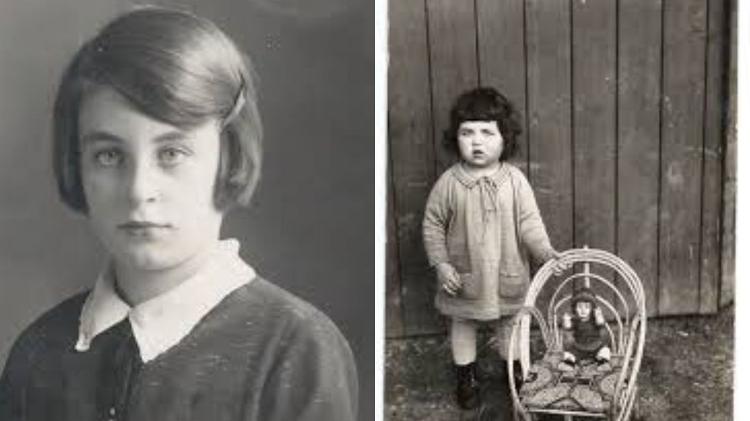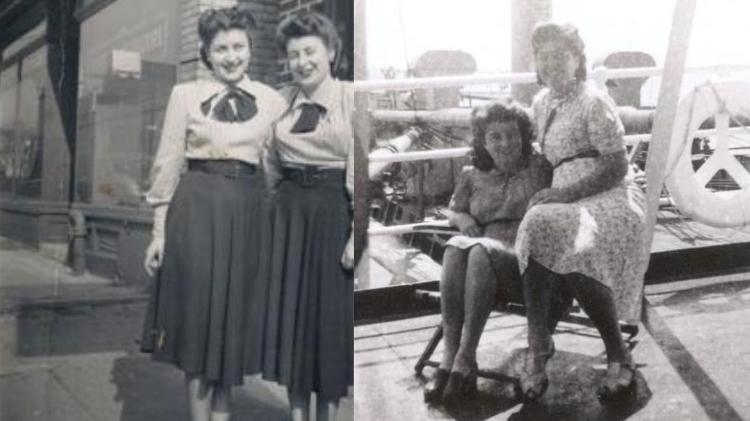Sharing her story of surviving the Holocaust, sisters Ruth Scheuer Siegler and Ilsa Scheuer Nathan died recently, just days apart. On August 23, Ilse died at the age of 98. On September 3, it was 95-year-old Ruth’s turn. Both lived in Alabama, United States.
The information was confirmed on the Facebook of the Alabama Holocaust Education Center, a nonprofit that educates Alabama residents about the history and lessons of the Holocaust.
With the end of World War II, the sisters moved to Birmingham (USA). They’ve been even closer throughout their lives, living just two blocks from each other.
“They were together all their lives. They had a special bond before, during and after the Holocaust. They talked every day,” said Ann Mollengarden, director of education at the Alabama Holocaust Education Center.
Ilse and Ruth were orphaned after surviving the Holocaust as their parents and an older brother died in Nazi concentration camps.
Surviving the Holocaust
The Jewish sisters were born in Germany and lived there with their families until 1939. They were 9 and 6 years old when Adolf Hitler came to power in 1933.
Ilse and Ruth, along with their mother Helene, join their brother Ernst and father Jakob, who fled to the Netherlands after Kristallnacht, the name for the wave of anti-Semitic violence that occurred on November 9 and 10. From .1938.
The family planned to obtain a visa for transit to England and later to the United States. However, before they could leave, the Second World War broke out and the borders were closed.

In January 1944, Jakob was arrested for not removing his hat in front of a German officer. When the family decided to stay together, they were all sent to Auschwitz II-Birkenau concentration camp for their father’s guilt.
The girls and their mothers selected for the job received striped clothing, a bowl, and sequential numbered tattoos. The children were separated from their mother and never saw her again.
The girls worked for hours carrying bricks from one end of the complex to the other. Ilse also sewed gun covers and uniforms. While working near the crematorium furnaces, they noticed mountains of shoes and then realized that their fellow prisoners had been killed and burned.
In July 1944, Ilse and Ruth were deported to Stutthof concentration camp in Poland, where they were forced to sleep outside. In mid-summer, they were transported to Praust, Poland, to clear the runways for German planes.
In February 1945, as Russian troops advanced, 800 girls were taken on a four-week death march towards the Baltic Sea, where they would drown. Only 50 people, including two sisters, survived this march.
As the Russian army approached, the girls were left to die by their captors. Even though their bodies were emaciated, they walked through the fields to the first farmhouse they found. The next day, the girls contacted a liberating soldier on the street and were taken to the Russian headquarters.
They were transported to a hospital in Putzig, Poland, where Ruth would recover from typhus, an infection from typhoid and concentration camp injuries.
Both girls began to recover and were transferred to a Russian hospital in Krakow, Poland, but escaped as a fugitive on a coal train to Prague. They encountered the Dutch army in Pilsen, Czechoslovakia, and were sent to Bamberg, Germany, to obtain the appropriate documents to return to their home in the Netherlands.
After returning to Utrecht, the Netherlands, the girls managed to find their mother’s younger brother and sister who had survived in hiding and began to rebuild their lives.
Fulfilling Your Father’s Dream
The sisters said that the last time they saw their father at the study center, a cousin gave him his US address.
“Recalling their father’s desire to move to America, the sisters contacted family members and immigrated to the United States in July 1946,” Mollengarden said. Said.
They met and married German-born Jews in 1949. Ilse married Walter Nathan and they had two children and five grandchildren. Ruth married Walter Siegler and had three children and seven grandchildren.

In 1960, Ruth and Walter moved to Birmingham to be closer to Ilse, who moved there with her husband in 1949. Both women were later widowed.

source: Noticias